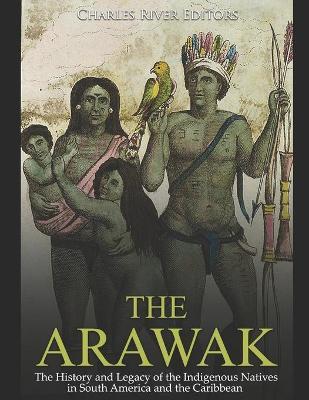The Arawak: The History and Legacy of the Indigenous Natives in South America and the Caribbean

The Arawak: The History and Legacy of the Indigenous Natives in South America and the Caribbean
*Includes contemporary accounts
*Includes online resources and a bibliography for further reading
"As soon as I arrived in the Indies, on the first Island which I found, I took some of the natives by force in order that they might learn and might give me information of whatever there is in these parts." - Christopher Columbus
On October 12, 1492, one of the most important "first contacts" of the modern era was made when three ships of Spanish origin approached the island archipelago now known as the Bahamas, cautiously dropping anchor as the captain of the fleet gazed across to what he assumed was the coast of India. According to the popular version of the story, amazed at the sight of ships and men of such unfamiliar appearance, the native people of the island plunged into the clear waters of the western Atlantic, expertly swimming or aboard dugout canoes, and came out to greet the strangers.
In all probability, the meeting was much more cautious and incremental, but the idea that these innocent people, raised in a tropical Eden, might embrace with such open enthusiasm their own destruction is picturesque, and no doubt appeals to contemporary perceptions. By whatever means one might choose to view it, this meeting of cultures certainly did mark the beginning of a bold new chapter in the history of Europe, and the beginning of the end of an ancient race of native people occupying a vast new continent.
The entries into Christopher Columbus' log as he recorded his first encounters with the indigenous people of the "Indies" are very telling. The island people arrived alongside his ships, offering humble gifts that Columbus described as "parrots and balls of cotton and spears and many other things, which they exchanged for the glass beads and hawks' bells." These were the Taínos people, or the "Arawaks" as they would come to be known, and Columbus described them as "well built...with good bodies and handsome features."
This description, while deceptively simple, had a chilling implication, because Columbus was not taking note of these facts out of idle interest but in terms of how best to exploit them. As the natives offered up gifts, and the open hand of friendship, and by implication the freedom of their islands, Columbus remarked simply on their primitive appearance and primaeval technology, and how easy they would be to overcome. He noted, "They do not bear arms, and do not know them, for I showed them a sword, the
PRP: 86.34 Lei
Acesta este Prețul Recomandat de Producător. Prețul de vânzare al produsului este afișat mai jos.
69.07Lei
69.07Lei
86.34 LeiLivrare in 2-4 saptamani
Descrierea produsului
*Includes contemporary accounts
*Includes online resources and a bibliography for further reading
"As soon as I arrived in the Indies, on the first Island which I found, I took some of the natives by force in order that they might learn and might give me information of whatever there is in these parts." - Christopher Columbus
On October 12, 1492, one of the most important "first contacts" of the modern era was made when three ships of Spanish origin approached the island archipelago now known as the Bahamas, cautiously dropping anchor as the captain of the fleet gazed across to what he assumed was the coast of India. According to the popular version of the story, amazed at the sight of ships and men of such unfamiliar appearance, the native people of the island plunged into the clear waters of the western Atlantic, expertly swimming or aboard dugout canoes, and came out to greet the strangers.
In all probability, the meeting was much more cautious and incremental, but the idea that these innocent people, raised in a tropical Eden, might embrace with such open enthusiasm their own destruction is picturesque, and no doubt appeals to contemporary perceptions. By whatever means one might choose to view it, this meeting of cultures certainly did mark the beginning of a bold new chapter in the history of Europe, and the beginning of the end of an ancient race of native people occupying a vast new continent.
The entries into Christopher Columbus' log as he recorded his first encounters with the indigenous people of the "Indies" are very telling. The island people arrived alongside his ships, offering humble gifts that Columbus described as "parrots and balls of cotton and spears and many other things, which they exchanged for the glass beads and hawks' bells." These were the Taínos people, or the "Arawaks" as they would come to be known, and Columbus described them as "well built...with good bodies and handsome features."
This description, while deceptively simple, had a chilling implication, because Columbus was not taking note of these facts out of idle interest but in terms of how best to exploit them. As the natives offered up gifts, and the open hand of friendship, and by implication the freedom of their islands, Columbus remarked simply on their primitive appearance and primaeval technology, and how easy they would be to overcome. He noted, "They do not bear arms, and do not know them, for I showed them a sword, the
Detaliile produsului










